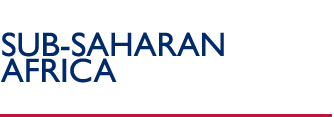Zimbabwe
USAID's Strategy in Zimbabwe
Zimbabwe’s interrelated political, economic, and social
crises have continued since 1998, taking a terrible toll on
the country’s people. Consecutive years of economic decline
have resulted in periodic shortages of food, fuel, electricity,
and other critical imports. Zimbabwe's once robust social services
are decaying, exacerbated by the AIDS epidemic and a considerable
brain drain of skilled personnel. The U.S. Government’s
interests in Zimbabwe are to prevent further deterioration of
the political and economic situation, to strengthen the prospects
for stability by fortifying civil society and democratic institutions,
to implement a robust response to the HIV and AIDS pandemic,
and to mount a flexible humanitarian response. Parliamentary
elections held on March 31, 2005 gave the ruling party a two-thirds
majority, but there are serious questions regarding the electoral
process.
MITIGATING THE HIV/AIDS CRISIS
Zimbabwe has one of the highest HIV and AIDS prevalence rates
in the world, estimated at 24.6 percent of the adult population.
Life expectancy has dropped from 61 years in 1990 to 34 years
in 2003. USAID's program to mitigate Zimbabwe's HIV and AIDS
crisis includes training, technical assistance, and commodities
to reduce the transmission of HIV/AIDS, improve maternal health
and nutrition, and build the capacity of the health system.
In one of the USG’s first overseas anti-retroviral therapy
(ART) programs, USAID’s collaboration with U.S. Centers
for Disease Control supports the Zimbabwean government's national
ART program, currently providing five health facilities with
training, technical assistance, and ART medicines for 100 patients
per site. A new effort to prevent mother-to-child transmission
(PMTCT) provided these services to 48,873 pregnant Zimbabwean
women, more than half of the total who received PMTCT services
in 2004. Utilization of voluntary counseling and testing services
continued to climb, with 154,826 new clients in 2004, a 64 percent
increase over 2003.
STRENGTHENING CIVIL SOCIETY
Zimbabwean civil society remains a vibrant force, with increasing
levels of political consciousness and debate. Unfortunately,
the Government of Zimbabwe has responded by tightening restrictions
on the independent media and journalists, and proposing legislation
that would curb the work of non-governmental organizations.
USAID’s program is designed to help civil society organizations
express their views on legislative matters, and to support Parliament’s
ability to be more receptive to their positions. Activities
include advocating to Parliament and local authorities, building
an effective committee system within Parliament, and supporting
local authorities to be more capable and open to citizen input.
In addition, USAID is training elected mayors and councilors
in modern management practices, good governance, and effective
participation with civil society: in effect, grass-roots efforts
to enhance long-lasting democracy.
ENHANCING ACCESS TO ECONOMIC OPPORTUNITIES
Official unemployment is over 70 percent, excluding hundreds
of thousands of former farm workers who were displaced by the
government’s fast-track land reform program. USAID's economic
opportunities program is designed to enhance food security and
facilitate income-generating activities for the disadvantaged,
mainly communal area (rural) residents, women, under- and unemployed
youth, the urban poor, the disabled, orphans, farm workers,
and households affected by HIV/AIDS. The program includes improved
agricultural practices, drought-tolerant crops, better access
to markets, household nutrition gardens, business opportunity
centers, and a legal services program.
HUMANITARIAN ASSISTANCE
Poor policies and deterioration in the rule of law continue
to decimate the economy, including the agricultural sector.
Combined with erratic rainfall, this has created the worst humanitarian
crisis in southern Africa—up to half the population has
been threatened with acute hunger since 2002. During that period,
USAID provided a total of 298,000 metric tons of food commodities
to the United Nation’s World Food Program. A further 169,000
metric tons was distributed, through a group of international
nongovernmental organizations, to vulnerable individuals and
food-insecure rural households through various programs. Nonfood
assistance amounted to over $12 million in fiscal years 2003
and 2004. USAID continues to provide targeted feeding to schools
and the most disadvantaged.
Back to Top ^
|


